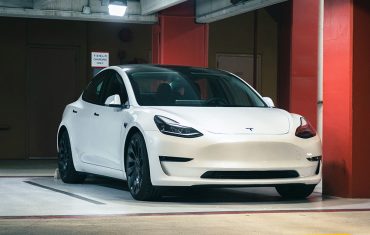
Overcoming barriers to EV adoption
Fleet ManagementElectric vehicles (EVs) are growing in popularity as more businesses understand the enormous advantages they offer. As a fleet manager, you may be considering EVs for your fleet.
What you may not realise is just how resistant people can be to EVs. Many of their concerns may feel justified based on what they’ve heard, but it’s often more about their own psychological barriers to change than empirical data.
Let’s take a look at some of the most common barriers facing EV adoption and how you can work to overcome them.
What are the main barriers to EV adoption?
- They are too expensive compared to internal combustion vehicles.
- ‘Range anxiety’ means you are forever in fear of the battery running out and leaving you stranded.
- People worry they won’t know how to drive these high-tech cars.
- EVs don’t perform as well as ICE vehicles.
How can these barriers be overcome?
Knowing the barriers is one thing. Finding ways to overcome them is where your work begins if you want to introduce EVs to your business. Here are our tips:
1. Perceived cost
While it’s true that EVs often have a slightly higher price tag for the same sized model in an internal combustion engine (ICE) car, they can close that gap when it comes to running costs. EVs can cost the equivalent of paying 30c/L of fuel to run, and their lack of moving parts means they’re much cheaper to service. Purchase prices are dropping every month, there is more choice coming to market, and many EV models are very competitively priced.
The best way to overcome this barrier of perceived cost is to fight it with data. Present decision-makers with a business use case for EVs using total-cost-of-ownership (TCO) information on purchase price and running costs.
Compare this with a more typical petrol/diesel vehicle and let them draw their own conclusions. Sometimes if you make people feel as though something was their idea, they’re more likely to go for it!
2. Range anxiety
Range anxiety is a psychologically driven fear that an EV will run out of charge and leave you stranded. It can come from a misunderstanding of just how far EVs can travel and how they operate. While range of early EVs was limited, today’s EVs can offer ranges equal to a full tank in their ICE equivalents.
Again, range anxiety can be combated with data. Many fleet vehicles only travel short distances around a town or city and are perfectly suited to an EV range. In New Zealand, over 90% of daily vehicle travel is 90km or less, well within the range of an EV. It can help to remind the team that they’ll still have the option of driving an ICE vehicle if it’s really required for extra-long driving distance.
3. Driver education
Once a driver gets behind the wheel of an EV, they’re often shocked to discover just how similar it is to driving an ICE. Until they can test-drive a vehicle, you’ll encounter resistance from people who believe additional driving skills are required. In fact, the reactions is more often one of delight at the more fun and engaging driving experience with the new technology in EVs, like regenerative braking and optimal power driving.
Three ways to overcome this are to get drivers and stakeholders behind the wheel as soon as possible by organising test-drives with your dealer, implementing a defensive driving training program to show drivers you’re considering their fears and upskilling them, and getting EV champions on board to help change the company culture around EVs and their benefits.
4. Learn about EV performance and fit-for-purpose
You need an expert in your corner who can help you choose the right EV for your company. That’s where we come in. We can help you get your fleet sorted with the best EVs for your needs and your budget.
There are already EV options with great power and performance for the majority of New Zealand fleet requirements, and for the more specific need, new models are on the way. For example, a common objection we hear is that there is no EV for load carrying and more heavy-duty work. This is true – for now. But global automakers have options coming soon.
As a fleet manager, you’ll need to directly address these sorts of objections and barriers if you want to successfully adopt EVs in your business. If you can do this, you’ll gain all the advantages EVs have to offer your fleet.
What are some of the biggest barriers to adoption at your company?
 Driving Insights
Driving Insights




